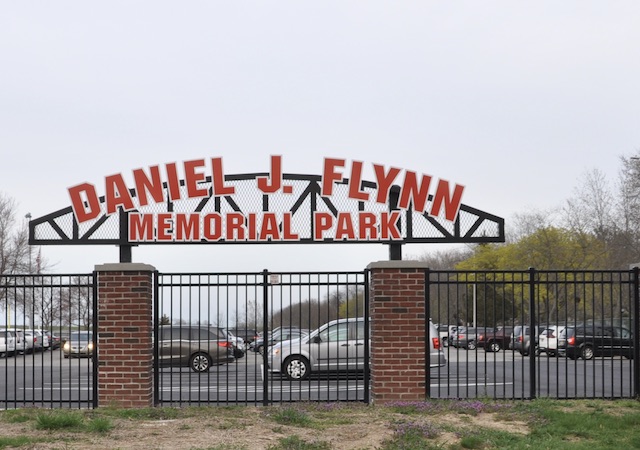OP-ED Keeping Communities Strong By Andrew Cuomo
 Thursday, April 20, 2023 at 1:20PM
Thursday, April 20, 2023 at 1:20PM Washington can help renew our cities: Urban investment is needed locally and nationally to keep communities strong
By Andrew Cuomo
This is an op-ed written by former NYS Governor Andrew Cuomo for New York Daily News
 There are a variety of negatives that are caused by our nation’s current political extremism. The resulting government paralysis prevents us from addressing truly pressing and challenging issues.
There are a variety of negatives that are caused by our nation’s current political extremism. The resulting government paralysis prevents us from addressing truly pressing and challenging issues.
In the post-COVID world, there are new economic and social forces generating an urban crisis that the country must immediately recognize and address.
As I saw first-hand when I headed the Department of Housing and Urban Development, cities are constantly evolving: they are either growing or dying and government policies can make the difference. Economic and social changes had imperiled cities in the 1960s and federal and state policies crafted a responsive urban agenda. COVID has created another urban crisis.
“Remote work” is an economic game changer and is here to stay. It reduces the number of people who must travel into central cities and increases mobility and locational choices for individuals and businesses. COVID has also changed people’s preferences.
Data suggests the overall percentage of people who prefer suburban living to urban life has increased post pandemic. In 2018 approximately 25% of Americans said they would prefer urban living with that number dropping to 19% post COVID. The percentage saying they prefer suburban living increased from 42% to 46%.
Aggravating the situation is that approximately 20% of Americans believe their life and their community will never return to pre-pandemic conditions. Therefore, the desire to move to improve conditions will be higher for this group.
There is no debate but that the shift is happening. New York State, for example, lost close to 500,000 people, as did California.
Florida gained 300,000 people, Texas, 250,000, Tennessee and Georgia 150,000, Arizona 100,000 and the Carolinas 200,000 people.
There are several factors affecting these shifts: some beyond our control, but there are also government policies that can manage the forces at play.
Climate is a major factor: Obviously warmer regions of the country have advantages that will now make them naturally more competitive in attracting population.
Americans rank the availability of affordable housing as a primary concern in locational decisions. Urban areas historically have higher costs of housing as a function of the market economy. However, local and federal policies could increase the supply of affordable housing in urban areas and lower overall costs. Vacant commercial space in urban areas has increased dramatically. Commercial vacancies can be converted to affordable housing if local governments are creative and expedite zoning and building code changes.
Public school quality is also a major factor. Suburban jurisdictions often have stronger property tax bases, and therefore better funded public schools than urban areas. State education funding formulas can remedy this inequity.
A major factor in locational decisions is public safety. Fear of crime has become a major issue in our larger urban areas. Chicago, New York, Los Angeles, San Francisco experience a high rate of widely publicized violent crimes and together with increased homelessness and general decay, cities appear “out of control.” Current political forces are slow to recognize or resolve these issues and, in fact, compound the problem. “Defund the police” and “tax the rich” political movements suggest to the local citizens that the government is out of touch.
However, economics is the single most powerful factor. Cost of living varies widely across the country. High tax states and cities will now face greater competitive challenges. Wealthier individuals who pay higher taxes can save tens of thousands of dollars by simply moving their residence. The best way to raise state and local revenue is to stop the tax loss from individuals and businesses leaving and to reduce the tax differential between their state and lower cost states. Obviously, they should not be aggravating the problem by increasing taxes.
The federal government can make a major difference. During the Trump administration, taxes were dramatically increased in urban areas and democratic states by capping the deductibility of state and local taxes. The same cities and states that now have a disadvantage post-COVID would benefit greatly from the federal government repeal of Trump’s prejudicial tax policy. Democratic officials had pledged to repeal the SALT cap as soon as Trump was out of office. They have failed to honor the promise. This one move would in effect reduce the tax burden by nearly 40%. It could alter the economic calculus, literally overnight.
There is no doubt that the post-COVID world will be dramatically different, but will it be better or worse? We must stop with the polarizing extremist politics and make progress on real issues; save our cities. Smart government has made a difference before and must once again.
Cuomo was the 56th Governor of the State of New York and headed HUD during the Clinton administration.
This is an op-ed written by former NYS Governor Andrew Cuomo for New York Daily News
















